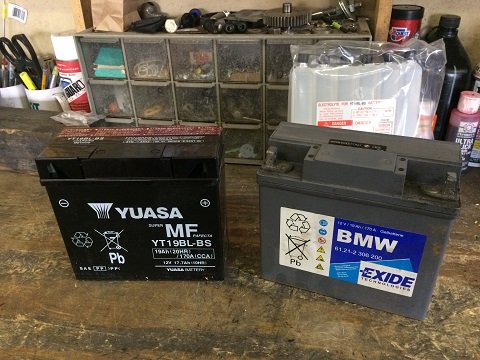Replace Fork Seals BMW R-Series (Telelever)
Article by Mark Trotta
Fork seal replacement on R-series bikes will include disassembling the front forks, removing the old seals, and installing new ones. The front wheel does not need to come off with Telelever front ends, and there are no compressed springs to worry about (damping is done by the external single shock).
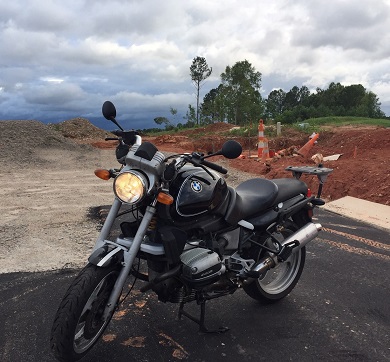
This article is a step by step account of how I replaced the fork seals on my 1995 R1100R. Procedures will be the same for R1100RS and R1100GS, and other Telelever-equipped BMW motorcycles.
********************
Getting Set Up
If you have a motorcycle lift stand, that's great, but you really don't need one for this procedure. Fork seals can be replaced with the bike up on the center stand. Just give yourself a little working room around the front and sides of the bike.
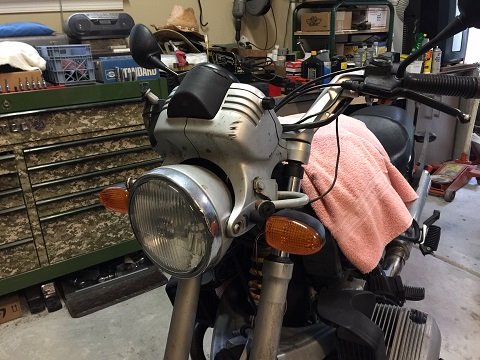
Before you begin, drape a heavy towel over the gas tank. The handlebars are removed with 6mm Allen bolts--you may want to spray them with penetrating fluid before you start.
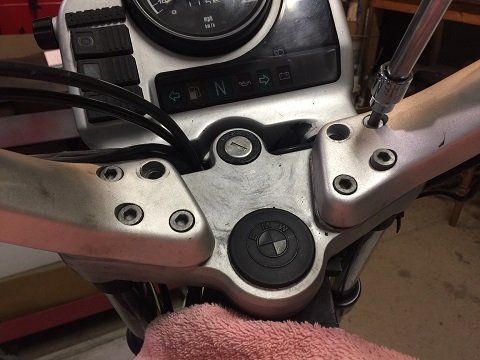
The handlebar bolts are two different lengths, so make a note of which ones go where.
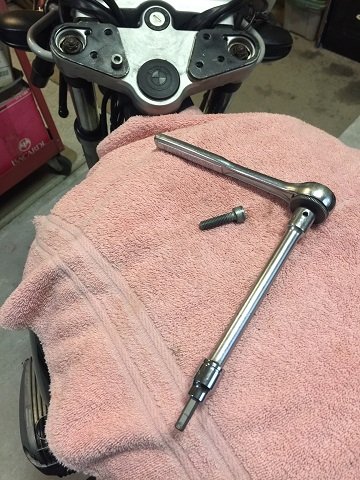
Once the bars are removed you'll see the top fork nuts.
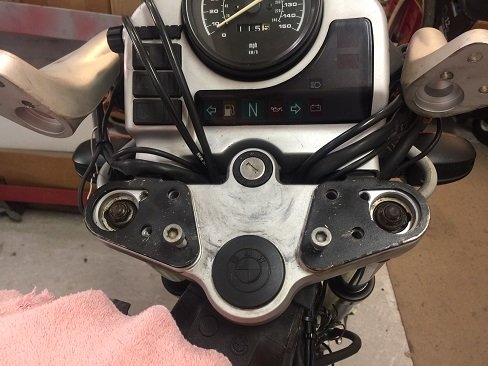
The top fork nuts have a 14mm hex head. To keep them from spinning, there is a 22mm nut just below the top tree.
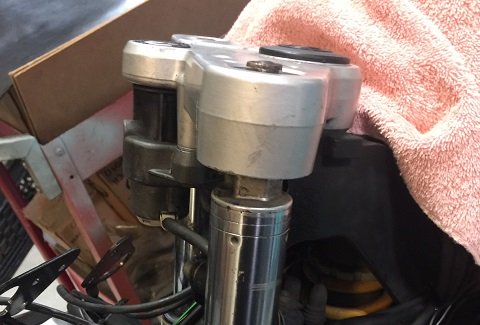
If you don't have a 22mm wrench, you can grab the fork tube with a vice grip and a rag.
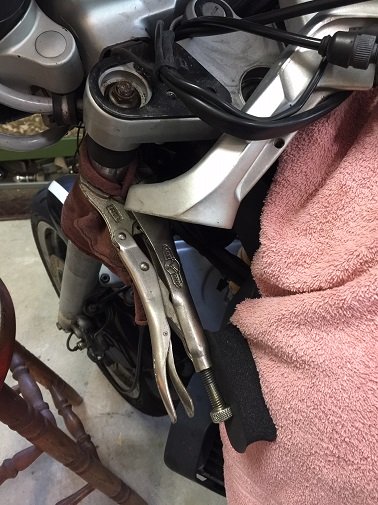
TIP: Place a foam block on the other side of the bottom of the vice grip. This will prevent possible damage to the gas tank.
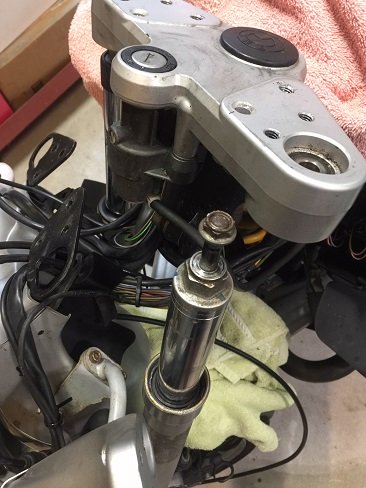
The fork tube can now be pushed down to clear the top tree. After wiggling the front wheel an inch or two, the fork will slide up and out.
Have a drip tray ready when you pull out the slider.
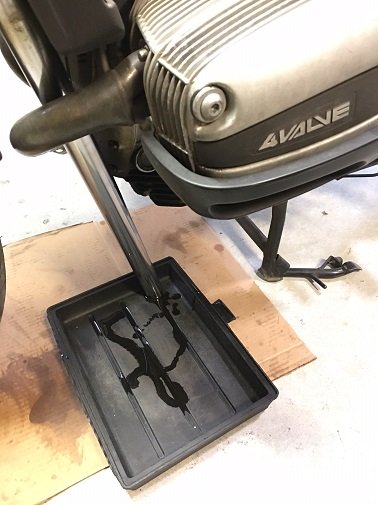
The upper 'wiper' seal can be pried off with a gasket scraper.
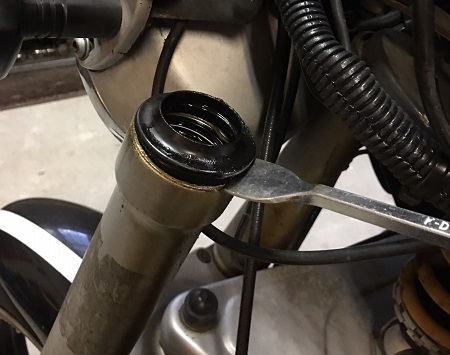
What You're Removing (and re-installing)
- Two upper wiper seals (replace)
- Two retaining rings (re-use)
- Two fork seals (replace)
- Two metal washers (re-use)
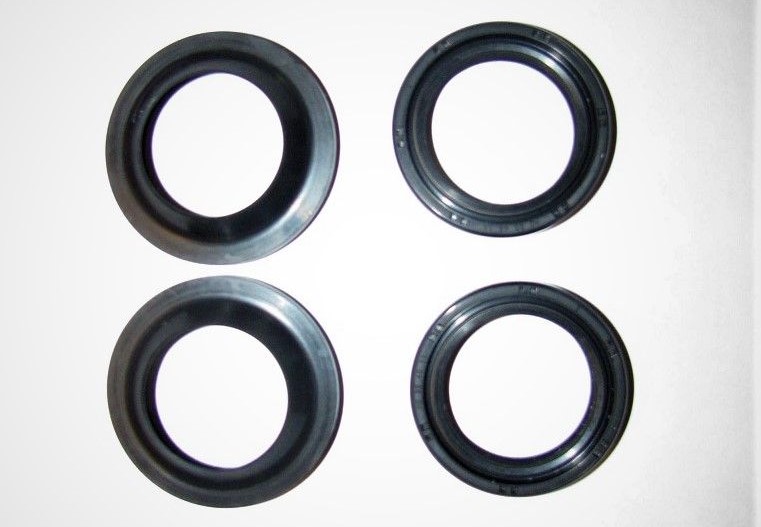
********************
Replacement Seal Kit
I bought replacement fork seals from Beemer Boneyard. The kit fits:
- R850/1100/1150/R1200C (all models)
- K1200RS (after 9/98)
- K1200GT (2003-2005)
- K1200LT (all)
- R1200R (2007-2010)
- R1200RT (2005-2013)
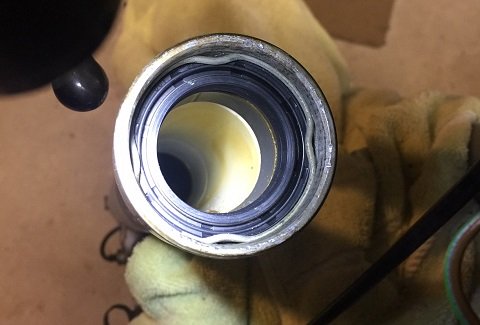
The retaining ring can be removed with a flat-blade screwdriver. The only reason to replace these is if you lose one, so put it in a clear bag and put it out of the way.
********************
Pulling Out The Old Seal
An automotive seal puller can easily nick the inner tube that fork oil can get past. If you choose this method, be very careful you don't nick the soft alloy.
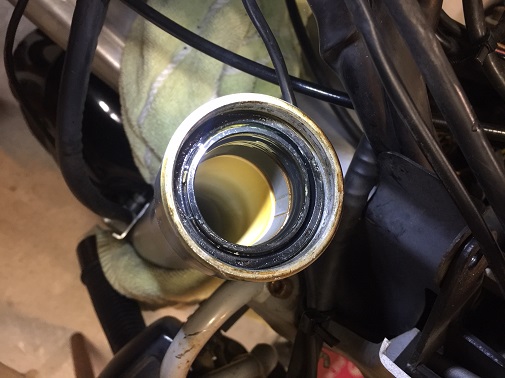
A safer method is to screw two drywall screws on opposite sides of the seal, then slowly pull them up with pliers.
Another method is to use a heat gun to get the old seal out.
Once the seal is out, you'll see a metal washer underneath.
Check Inner Fork Tubes For Nicks
Close inspection revealed a nick on the inside of one of the fork legs, undoubtedly done by a previous attempt at replacing the seal.
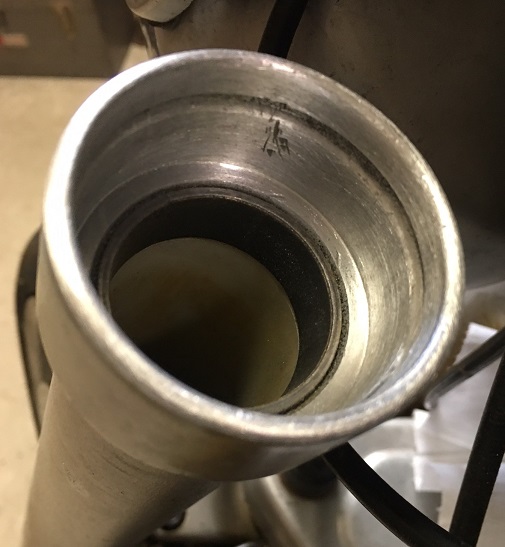
The nick was removed by sanding with progressively finer Emory cloth (coarse, medium, fine).
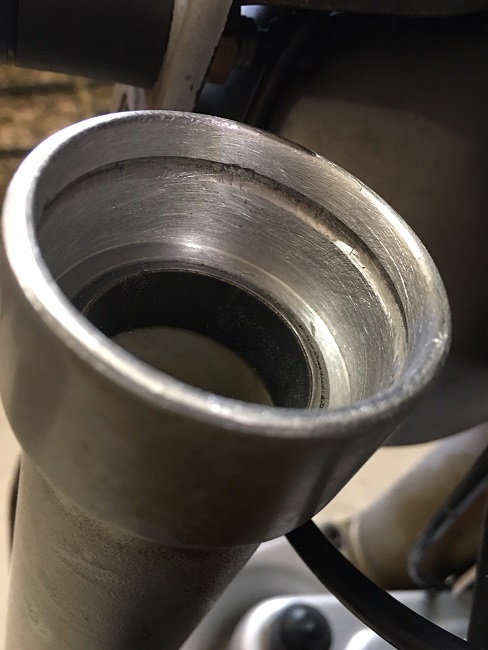
A couple of sanding sessions resulted in a surface smooth enough to provide a leak-proof seal.
*******************
Reinstallation
Assembly is essentially the reverse of disassembly.
CAUTION: Careful attention to detail is critical to avoid damage to the fork tubes and new seals.
A little fork oil on the new seal helps the installation. Make sure the metal washer is in place, then situate the new seal in the lower fork with your fingers.
Which Way Does The New Seal Go?
The new seal sits with the tapered side up--the sharp edge faces downward.
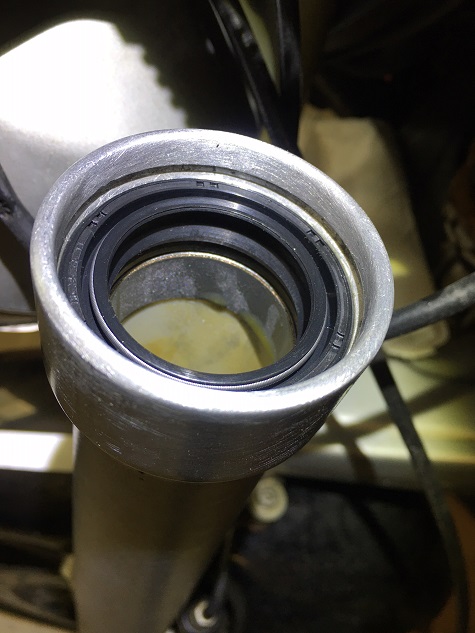
The side with the writing on it should face up. The open side with the visible spring should face down.
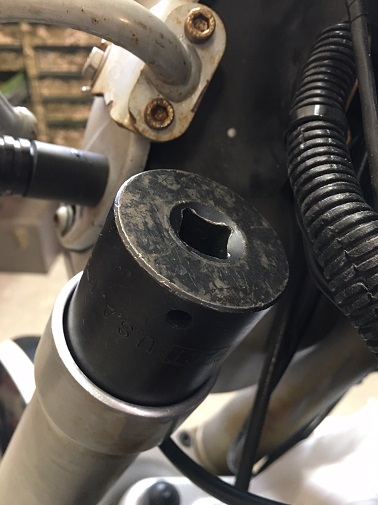
Find a socket the same size as the seal and knock it in evenly. I used a soft rubber mallet.
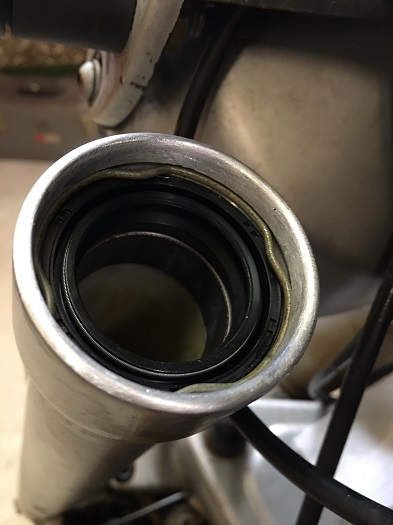
Re-install the seal retaining ring.
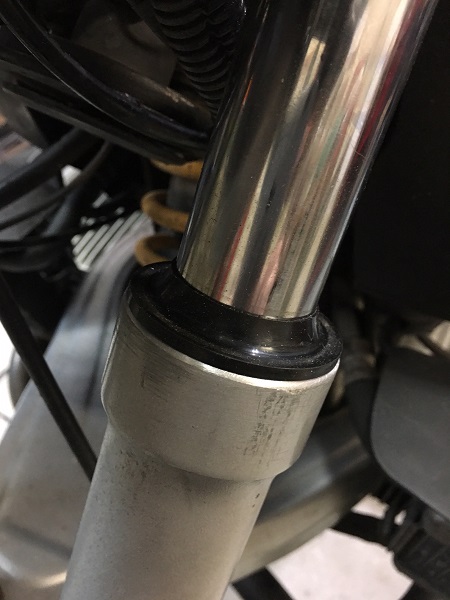
Before re-installing the fork slider, slide on the upper slider seal.
********************
Add Fork Oil ?
On Telelever-equipped bikes, fork oil is not essential, all it really does is lubricate the sliders.
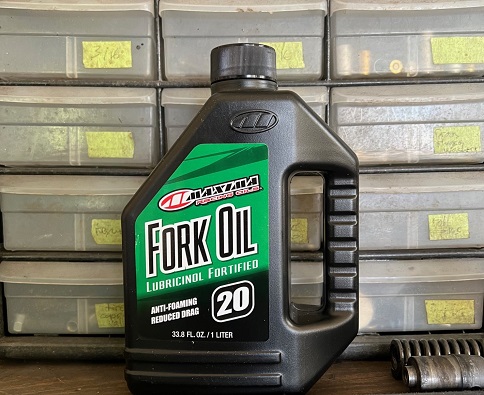
So, unless your brake calipers and front wheel have been covered in oil for months, you probably won't need to add any.
Most motorcycle manufacturers recommend 20 weight fork oil for average conditions. For extreme conditions, use 10 weight (cold weather) or 30 weight (warm weather).
********************
Related Articles:
BMW R1100R Review
R1100R Battery Replacement
R1100R Ignition Switch Replacement
BMW Motorcycle History
